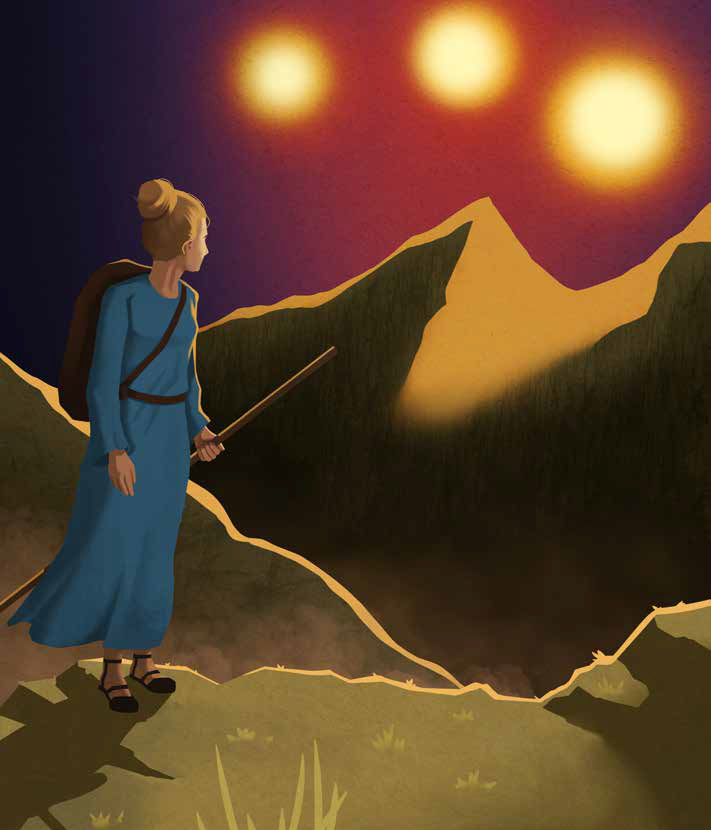Ireland is known worldwide as the ‘Land of Saints and Scholars’ and many male Irish saints are well-known for their work, like St Columba, and of course St Patrick. We speak about St Patrick quite often and along with St Brigid, these two saints are the most famous from the annals of our country’s history. However, there are many. many Ireland female saints that are left unspoken of.
Great pioneering women such as St Attracta, St Íte and St Brónach have all had marvellously wondrous feats of God attributed to them. Why are these amazing Christian women left forgotten by time? Lorraine Mulholland in her new book, Saint Brigid & Other Amazing Irish Women aims to change that.
Many Irish women saints are revered locally such as St Gobnait and some are internationally celebrated such as St Dymphna but most often in national and secondary schools children only learn of the three patron saints of Ireland, of which only one is a woman – St Brigid.
But what about the other Irish women who have made a difference? With Imbolc/St Brigid’s Day becoming a new national holiday this year, the focus of much of the celebration is Irish women themselves, their contribution to Irish society, their hard work and achievements, and their stories.
Below are just four of the famous Irish female saints that have often over the years become eclipsed by others and forgotten by many.
St Ita

Saint Íte from Lorraine Mulholland’s Saint Brigid & Other Amazing Irish Women.
Called the Brigid of Munster, is the Patroness of Limerick, where her memory is fondly cherished to this day. Immense crowds of people still assemble on her feast day at Kileedy, where the ruins of her ancient church are still to be seen.
Ita was a direct descendant of Con of the Hundred Battles. She was born in A.D. 480 in County Waterford. The name conferred on her at baptism was Deirdre, or Dorothea; but owing to her longing desire for the gift of Divine love, she came to be called Ita, which signifies thirst, or longing. Even in her infancy, many miracles attested her sanctity. Once, we are told, the room in which she slept was filled with a flood of supernatural radiance. For some time after this the child’s features were lighted up by a marked angelic beauty.
When Ita founded her convent at Hy-Connail, she was soon joined by many holy maidens eager to imitate her. Her whole life presents an example of affection and charity, which, we may say, are the most beautiful traits of our Irish saints. She died on the 15th January, A.D. 569, and was laid to rest within the little church of the monastery which she had chosen as her earthly habitation.
St Fanchea
The sister of St. Enda, and the daughter of Conall of Orriell. She lived about the fifth or sixth century, and was the abbess of her monastery. Being warmly attached to her brother, Fanchea had him to visit her constantly. Once, it is related, when Enda passed her convent with his clansmen she refused to see him till he assured her that he would never shed the blood of any man. Finally, she was the means of converting him, and he then entered religion.
When once he was visiting Fanchea’s convent, he saw a beautiful young lady, who was under his sister’s care. He immediately wished to marry her. Fanchea spoke to the young girl, and advised her to enter religion, and take a heavenly path in life. This she did, and this was the first step to Enda’s conversion.
St. Attracta
Her feast day is on the 11th of August, was one of the numerous band of holy virgins who consecrated their lives to God while St. Patrick still lived. She devoted her time to the poor and the infirm. Even during her life, she worked many wonders. Among others, by her prayers she freed Connaught, her native province, from a wild beast, which was the terror of the inhabitants. Once, as the monster was rushing towards the sanctuary. Attracta went on her knees, prayed earnestly to God, and the wild beast was suddenly struck dead,
St. Dymphna
The virgin, Dymphna, was born in Ireland of royal heathen parents, and grew “as a rose amongst thorns.” Despising the allurements of a pagan court, she secretly received baptism, and devoted herself to Christ. She lived in the 7th century, two hundred years after St Brigid and her name means ‘little poetess’ in Irish.
Fleeing from a wicked man, who desired to be her lover, Dymphna, in company with the blessed Gerebernus and others, took ship to Antwerp. From there they proceeded to Ghela, where, establishing a home, she gave herself up to Divine contemplation, and lived an angelic life.
After three months, the King, her father, followed her, and, after giving orders for the execution of Gerebernus. himself beheaded Dymphna.
If like us, you’re just as fascinated by the great Irish women from our past and want to know more about them, Lorraine Mulholland’s book, Saint Brigid & Other Amazing Irish Women is a must read. Find it on our website here.

